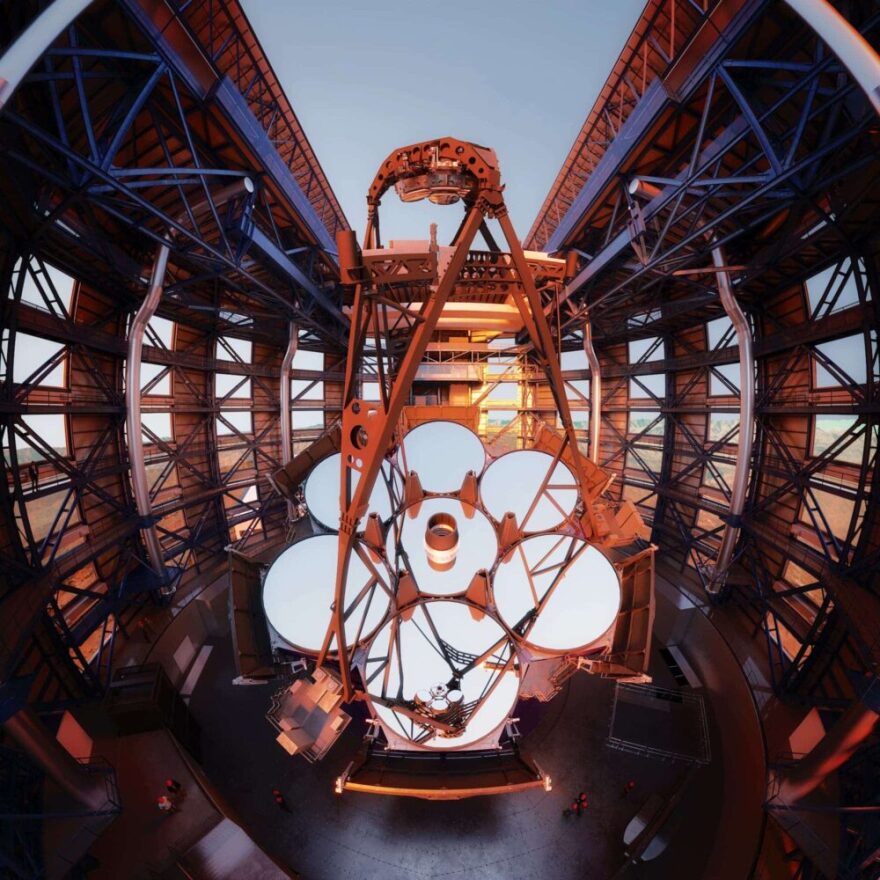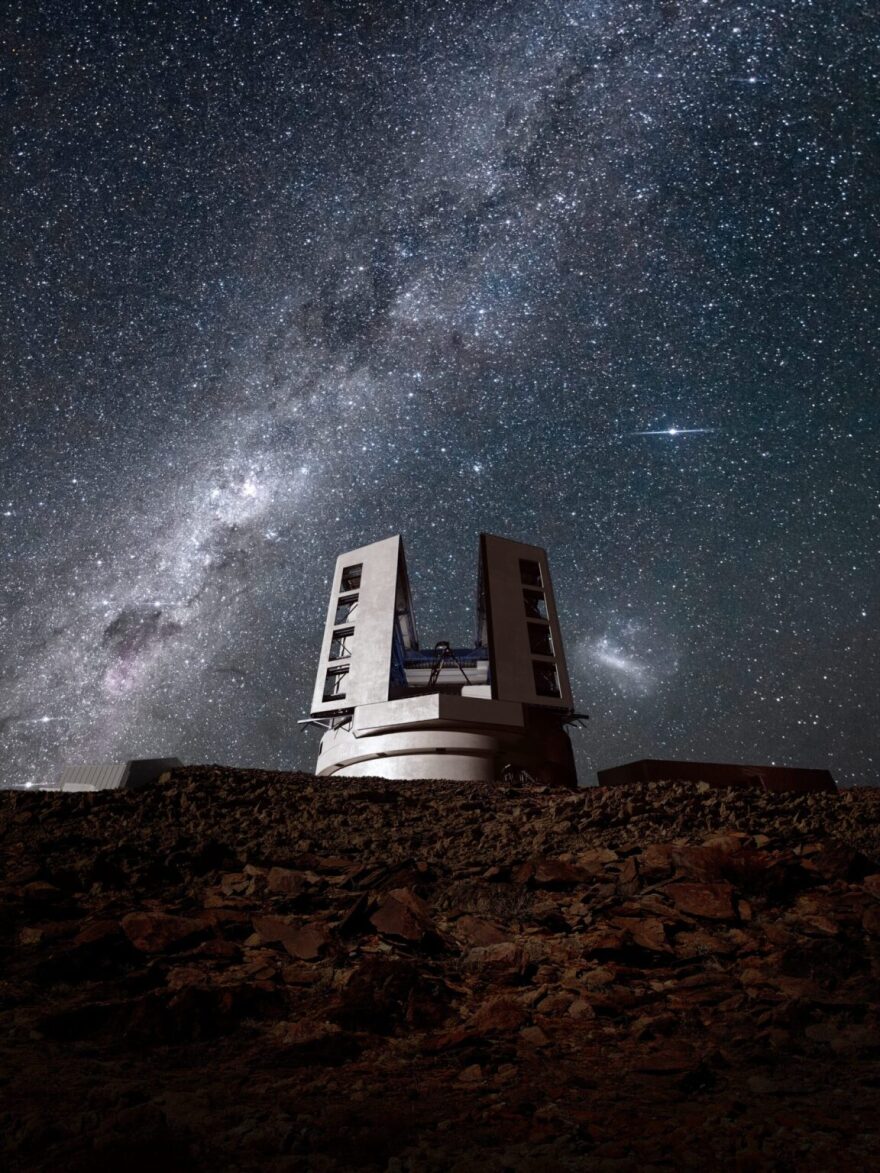Texas is home to some of the best and brightest in the field of astronomy, and many are now part of a collaborative effort to build a new giant telescope.
The Giant Magellan Telescope is currently under construction at a new observatory in Chile. Fifteen institutions are working to realize its construction, including the University of Texas at Austin and Texas A&M.
Taft Armandroff is the director of UT-Austin’s McDonald Observatory and vice chair of the Giant Magellan Telescope Organization’s board of directors. He joined the Standard to discuss the project. Listen to the interview above or read the transcript below.
This transcript has been edited lightly for clarity:
Texas Standard: What’s going to be so special about this Giant Magellan Telescope?
Taft Armandroff: So the biggest telescopes in the world right now have an aperture, the light-collecting area, of about 10 meters in diameter. And the Giant Magellan Telescope is going to be 25 meters in diameter.
So you can think about starlight falling on Earth, and telescopes are really buckets that we put out to catch starlight the way you might collect rainwater. So this will have five times the collecting area of the largest telescopes in the world today, like the Hobby-Eberly Telescope that we have at McDonald Observatory.
Amazing. I mean, where are we at in the process of bringing this to life, so to speak?

We’ve developed this organization of 15 universities and research institutions, which includes UT-Austin and Texas A&M, and we’re building the long lead parts – like it takes a long time to build these mirrors for the telescope. We’re building seven of them, and they’re each 8.4 meters – or about 27 and a half feet – in diameter. So we’ve cast all of them, and we’ve completed three of them.
We’ve started building the structure to hold the mirrors accurately in place and to be able to point at stars around the sky. And then at the site in Chile, we’ve created the pad for the telescope and the roads and power and water, and we have a place for the workers to stay and the astronomers to stay.
So we’ve made a lot of progress, but we’re trying to make the big push now to completion.
Is it important that it’s collaborative, or perhaps necessary, because it’s just such a big undertaking?
Absolutely. UT, as big and powerful as it is, can’t really afford to do this on its own. The 10-meter class telescope, Hobby-Eberly, was about the biggest we could build on our own. And in fact, none of the institutions that are involved could do this on their own – financially or technically.
But in addition to that, scientifically, over these 15 institutions, we have many of the best minds in astronomy and we’ll work together collaboratively. And we’ll share the telescope and work to make it as excellent as we can together.
» GET MORE NEWS FROM AROUND THE STATE: Sign up for Texas Standard’s weekly newsletters
I mean, is it just super-sizing what telescopes already are, or are there specific engineering challenges in what you have designed?
Oh, absolutely. There’s all sorts of new technologies since the last generation of telescopes was developed, which was about more than 25 years ago that the first of these 10-meters came online.
So there’s a new technology called adaptive optics that takes out the blurring that’s caused by the atmosphere. It’s a similar phenomena to when you look down a hot road and you see waves of heat coming off the road.
We try to find the sites in the world where that has a minimum impact on the telescopes, but it’s still there. And now we have a technology with something called “small deformable mirrors” that remove that blurring of the atmosphere. So we get the same level of detail or spatial resolution as you would from space.
So the Giant Magellan Telescope is going to live in Chile, but how will it benefit UT and Texas A&M once it’s up and running?

So we’ll have observing stations here in Texas so that our faculty and students can operate the telescope from here and they won’t always have to travel to Chile. We’ll create a kind of environment where we can bring students from our astronomy classes through and have them see discovery in action via remote video technology.
But the astronomers tend to go where the best tools to do their research are. This has already helped UT-Austin recruit a new generation of fantastic entry-level astronomy professors. And when it’s online, it’s going to be even stronger.
So these 15 institutions should be able to attract the most promising astronomers and the students with the most passion about astronomy.
Well, what should we be looking out for next? I guess, when will the Giant Magellan Telescope be ready?
It’ll be in the 2030s. And one of the reasons we’re talking about this right now is the National Science Foundation, a part of the federal government, just admitted the Giant Magellan Telescope into the final design phase, which is a preparatory process to qualify for large amounts of federal support. So depending on how quickly that federal support occurs will determine when the telescope’s ready.
But just some of the things to be excited about, to me, are stars with planets around them – for actually imaging them, because it’s very difficult to see a planet next to a star because the star is over a million times brighter than the planet. So that’s one area.
The most distant galaxies, we’ll be able to study them in-depth with the Giant Magellan Telescope. Dark energy, dark matter, the big mysteries of astronomy… The Giant Magellan Telescope is built to address all of them.
If you found the reporting above valuable, please consider making a donation to support it here. Your gift helps pay for everything you find on texasstandard.org and KUT.org. Thanks for donating today.

